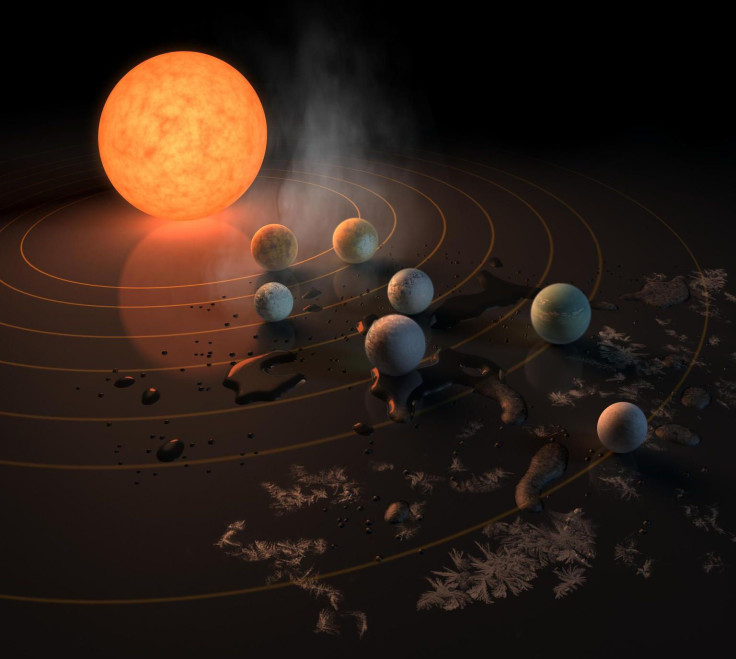More Alien Planets? Scientists Seek Jupiter-Like Giants In Trappist-1 System

The Trappist-1 solar system already stunned astronomers when they discovered it had seven Earth-like planets orbiting a star about 40 light years away from us. But there might be even more out there to explore.
A group of scientists is investigating whether there are extra planets orbiting farther out from the dwarf star at the center of the Trappist-1 system than the seven rocky, Earth-sized planets that have already been discovered. The team is looking for gas giants, a type of planet that includes our own Jupiter.
All seven of the known rocky planets in Trappist-1 are orbiting close to their star, with periods between just 1.5 to 20 days. Because that star is so small, having about only 8 percent the mass of the sun, the planets there can have tight orbits without getting scorched like Mercury, the closest planet to our own star. In fact, scientists believe at least three of them are at a distance where they receive just the right amount of heat to support liquid water, as opposed to gas or ice — a distance called the habitable zone.
The seven planets are also close to one another. NASA has previously described exactly how close: “If a person were standing on one of the [planets’ surfaces], they could gaze up and potentially see geological features or clouds of neighboring worlds, which would sometimes appear larger than the moon in Earth’s sky.”
From the Trappist-1 star to the farthest of the seven rocky worlds, called Trappist-1h, there are about 6 million miles.
Gas giants would be circling at much greater distances.
In the search for those possible gas giants, so far the researchers have excluded any planets larger than 4.6 times the mass of Jupiter orbiting at a distance from the Trappist-1 star that would give it a one-year orbital period, according to a paper in the Astronomical Journal. That’s based on their observations over the last few years. They have also ruled out a planet with a five-year orbit larger than 1.6 Jupiter masses.
For comparison, Jupiter takes about 12 years to complete an orbit around the sun, but our star is larger and the planets in our solar system are spaced farther apart than in Trappist-1.
More data analysis and observations “should either detect any long-period planets, or put an even tighter constraint on these mass upper limits,” the paper says.
The Carnegie Institution for Science explained that finding gas giants in the Trappist-1 system, if they exist, would be about more than just the discovery itself.
“If gas giant planets are found in this system’s outer edges, it could help scientists understand how our own solar system’s gas giants like Jupiter and Saturn formed,” the institution said.

It wouldn’t be the first alien solar system where scientists have found a mixture of planet types. There have been other places around space where astronomers have spotted both planets close to the size of Earth and gas giants.
“So, asking whether these seven planets have gas giant siblings with longer-period orbits is an important question,” first study author Alan Boss said in the Carnegie statement. “There is a lot of space for further investigation between the longer-period orbits we studied here and the very short orbits of the seven known TRAPPIST-1 planets.”
© Copyright IBTimes 2024. All rights reserved.



















